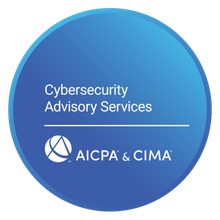IRS Publication 4557: Essential Guide to Safeguarding Taxpayer Data
In today’s digital age, where data breaches and cyber threats loom large, the responsibility of safeguarding taxpayer information has intensified for tax professionals. IRS Publication 4557 serves as a crucial resource, offering comprehensive guidelines for robust data security and federal compliance. This publication is not just a directive; it's a blueprint for building a fortress around sensitive taxpayer data, ensuring that every tax preparer, accountant, and CPA adheres to the highest standards of data protection.
As you navigate the intricate landscape of tax data security, understanding and implementing the practices outlined in IRS Publication 4557 is paramount. This guide delves into the essence of these guidelines, transforming complex regulations into actionable steps. You will uncover effective strategies to fortify your cybersecurity defenses, comply with federal mandates, and most importantly, earn the unwavering trust of your clients. Embark on this journey to elevate your practice’s data security protocols and stay ahead in the ever-evolving realm of tax data protection.
Understanding IRS Publication 4557 – Navigating the Landscape of Taxpayer Data Protection
In an increasingly interconnected digital world, the protection of taxpayer data is not just a responsibility but a critical mandate for tax professionals. IRS Publication 4557 stands at the forefront of this endeavor, offering an extensive framework for safeguarding sensitive information. This section of our guide aims to decode and simplify the publication, presenting its key aspects in an easily understandable format.
Comprehensive Overview of IRS Publication 4557
-
Unpacking the Publication: IRS Publication 4557 serves as a critical roadmap for tax professionals, guiding them through the complexities of data security. It outlines the necessary steps and best practices to ensure the confidentiality, integrity, and availability of taxpayer data. By diving into its core objectives, we uncover its role as an indispensable guide, aiming not just to inform but to empower professionals with the knowledge to protect sensitive taxpayer information against cyber threats.
-
Essentials for Compliance and Security: The publication sets forth essential practices and standards crucial for maintaining compliance with federal data security regulations. These include comprehensive guidelines on how to handle personal identifiable information, the implementation of strong access controls, and the importance of regular data security audits. Adherence to these standards is not only a regulatory requirement but a cornerstone in establishing a secure and trustworthy tax practice.
The Imperative of Safeguarding Taxpayer Data
-
Beyond Compliance - Building Trust: Protecting taxpayer data goes beyond meeting regulatory requirements; it's about building and maintaining the trust of clients. In a landscape where data breaches can have far-reaching consequences, the emphasis on data security becomes a key differentiator for tax professionals. This section highlights how safeguarding taxpayer data is instrumental in building long-lasting client relationships based on trust and integrity.
-
Navigating Risks in the Digital Age: With the advancement of technology, the risks associated with data breaches and identity theft have significantly increased. This part of the guide examines how the guidelines provided in IRS Publication 4557 are crucial in mitigating these risks. It discusses the evolving nature of cyber threats and the necessity for tax professionals to stay vigilant and proactive in their cybersecurity efforts.
Core Elements of IRS Publication 4557
-
Risk Assessment and Management: Effective cybersecurity begins with a thorough risk assessment. This segment breaks down strategies to identify potential vulnerabilities within a tax practice. It emphasizes the importance of understanding specific risks and implementing tailored countermeasures to protect against them.
-
Strategizing a Dynamic Data Security Plan: Creating a dynamic data security plan is vital for any tax practice. This section outlines the steps necessary to develop and execute a comprehensive plan that addresses all facets of data security, from securing client information to managing network access.
-
Fostering Employee Vigilance and Expertise: Employees play a crucial role in maintaining data security. This part discusses the significance of regular training and awareness programs to ensure all staff members are aware of the best practices in data security and their role in protecting sensitive information.
-
Preparing for the Unexpected - Incident Response and Recovery: No cybersecurity plan is complete without a solid incident response and recovery strategy. This section provides detailed insights into developing protocols to rapidly respond to and recover from cybersecurity incidents, thereby minimizing potential damage and restoring normal operations as quickly as possible.
-
Consistent Compliance and Adaptation: Regularly reviewing and updating security measures is essential to remain compliant with emerging threats and evolving regulations. This segment offers advice on conducting regular compliance audits and adapting security practices to meet changing cybersecurity landscapes and regulatory demands.
By engaging with the insights and recommendations presented in this section, readers will gain a nuanced understanding of IRS Publication 4557 and its pivotal role in fortifying their cybersecurity posture. This foundational knowledge is essential for implementing cutting-edge security measures and protocols that not only comply with federal standards but also elevate the trust and confidence of their clientele.
Implementing IRS Publication 4557: Practical Steps for Enhanced Data Security
After gaining a solid understanding of IRS Publication 4557, the next crucial phase is its practical implementation. This section outlines a structured approach for tax professionals to incorporate these critical guidelines into their daily operations, ensuring the highest level of data security and adherence to federal compliance standards.
Conducting Thorough Risk Assessments
-
Identifying Vulnerabilities: The first step in fortifying your practice against cyber threats is to conduct a detailed risk assessment. This process involves identifying potential vulnerabilities in your systems, such as weak passwords, outdated software, or unsecured networks. By pinpointing these areas, you can focus your efforts on strengthening these weak points.
-
Customizing Risk Management Strategies: Once vulnerabilities are identified, it's crucial to develop customized risk management strategies. This means creating specific plans to address each identified risk, whether through technological solutions, policy changes, or employee training. Tailoring these strategies ensures that they are effective and relevant to the unique needs of your practice.
Developing a Robust Data Security Plan
-
Blueprint for Security: A robust data security plan is your blueprint for protecting sensitive client information. This plan should detail the measures you'll take to safeguard data, including encryption methods, access controls, and regular security audits. It should be comprehensive, covering all aspects of data handling and storage.
-
Regular Updates and Revisions: Cyber threats are constantly evolving, and so should your data security plan. Regularly updating and revising your plan ensures that it remains effective against new types of cyberattacks. This involves staying informed about the latest cybersecurity trends and incorporating new best practices into your plan.
Cultivating a Culture of Cybersecurity Awareness
-
Training and Empowering Employees: Cybersecurity is not just a technical issue but also a human one. Training and empowering your employees are critical. Regular training sessions should be conducted to keep staff updated on the latest threats and safe practices. Empowering them means giving them the knowledge and tools they need to actively contribute to your practice's cybersecurity.
-
Promoting a Security-First Mindset: Cultivating a culture of cybersecurity awareness involves more than just training; it requires promoting a security-first mindset. This means making data security a core value in your practice and encouraging employees to always prioritize it in their work.
Preparing for Incident Response and Recovery
-
Effective Response Protocols: Having an effective incident response protocol in place is crucial. This should outline the steps to be taken in the event of a data breach or cyberattack, including how to contain the breach, assess the damage, and notify affected parties.
-
Resilience and Recovery Planning: Beyond responding to incidents, it's important to have a plan for resilience and recovery. This includes strategies for restoring lost data, resuming normal operations, and learning from the incident to prevent future breaches.
Commitment to Ongoing Compliance and Improvement
-
Regular Compliance Audits: To ensure ongoing compliance with IRS Publication 4557 and other regulatory standards, conduct regular compliance audits. These audits will help you identify any areas where your practice may be falling short and allow you to make necessary improvements.
-
Embracing Technological Advancements: Embracing technological advancements is key to maintaining a strong cybersecurity posture. This means adopting new tools and technologies that can enhance your data security and staying abreast of technological developments in cybersecurity.
By systematically implementing the strategies outlined in IRS Publication 4557, tax professionals can not only achieve compliance but also significantly enhance the security and integrity of their operations. This section provides a roadmap for translating the publication's guidelines into practical, actionable steps, setting your practice apart as a model of cybersecurity excellence in the tax industry.
Enhancing Data Protection: Advanced Strategies and Tools
As the digital landscape evolves, so do the challenges in safeguarding taxpayer data. This section explores advanced strategies and tools that tax professionals can implement to further enhance the security of sensitive client information, going beyond the basic requirements of IRS Publication 4557.
Implementing Multi-Factor Authentication
-
Strengthening Access Control: Multi-factor authentication (MFA) is a critical tool in strengthening access control to sensitive data. By requiring multiple forms of verification, MFA significantly reduces the risk of unauthorized access, ensuring that only authorized personnel can access client information.
-
Best Practices for MFA Implementation: Implementing MFA effectively involves more than just technology; it requires thoughtful integration into your existing processes. This includes choosing the right type of authentication factors and educating employees on the importance and usage of MFA.
Advanced Encryption Techniques
-
Protecting Data in Transit and at Rest: Advanced encryption techniques play a vital role in protecting data both in transit (as it moves across networks) and at rest (when stored on servers or devices). Encrypting data ensures that even if it's intercepted or accessed without authorization, it remains unreadable and secure.
-
Choosing the Right Encryption Solutions: Selecting the appropriate encryption solutions is key. This involves understanding the different types of encryption algorithms and selecting ones that are robust and suitable for the specific types of data handled in your practice.
Effective Data Backup and Recovery Solutions
-
Ensuring Data Integrity and Availability: Regular data backups are essential for ensuring data integrity and availability. In the event of data loss due to cyberattacks or other incidents, having a reliable backup allows for quick recovery of lost information.
-
Developing a Comprehensive Backup Strategy: A comprehensive backup strategy includes regular backups, secure and redundant storage solutions, and regular testing of backup processes to ensure data can be effectively restored when needed.
Embracing Cloud Security Best Practices
-
Navigating Cloud Storage and Services: As more tax practices adopt cloud storage and services, understanding and implementing cloud security best practices becomes crucial. This includes evaluating the security measures of cloud service providers and configuring cloud services securely.
-
Data Protection in the Cloud: Protecting data in the cloud involves a combination of encryption, access controls, and monitoring. It's important to understand the shared responsibility model in cloud security, where both the service provider and the user have roles to play in protecting data.
By adopting these advanced strategies and tools, tax professionals can significantly enhance the level of data protection in their practices. These measures not only provide an additional layer of security but also demonstrate a commitment to maintaining the highest standards of data privacy and cybersecurity.
Emerging Trends in Cybersecurity and Their Impact
In the dynamic field of cybersecurity, staying informed about emerging trends is crucial for tax professionals. This section highlights recent developments in cyber threats and the strategies needed to effectively counter them, ensuring robust protection for taxpayer data.
Navigating Social Engineering and Advanced Persistent Threats (APTs)
-
Understanding Sophisticated Cyberattacks: Social engineering and APTs represent some of the most sophisticated cyberattacks. These threats often involve manipulating individuals into divulging confidential information or gaining unauthorized access to systems over extended periods.
-
Strategies to Mitigate Advanced Threats: Combatting these threats requires a combination of robust security protocols, employee training to recognize and respond to social engineering tactics, and advanced monitoring systems to detect and respond to APTs.
Dealing with Ransomware and Internet of Things (IoT) Security Issues
-
Rising Threat of Ransomware Attacks: Ransomware, a type of malware that encrypts data and demands payment for its release, has become increasingly prevalent. Understanding how to prevent and respond to ransomware attacks is essential for maintaining data integrity.
-
Securing IoT Devices: With the growing use of IoT devices in business operations, ensuring these devices are secure is critical. This includes implementing strong security measures and regularly updating IoT devices to protect against vulnerabilities.
Adopting Cloud Security Best Practices
-
Maximizing the Security of Cloud Services: As more tax practices leverage cloud services for data storage and processing, adopting best practices in cloud security is paramount. This involves understanding cloud service models, implementing strong access controls, and ensuring data encryption.
-
Regular Assessment and Vendor Management: Regularly assessing the security measures of your cloud service providers and effectively managing these vendor relationships are key components of a sound cloud security strategy.
By staying abreast of these emerging trends in cybersecurity, tax professionals can proactively enhance their defenses against new and evolving cyber threats. This section provides insights into the latest cybersecurity challenges and practical advice on how to navigate them, ensuring that your practice remains secure and resilient in the face of these threats.
Best Practices for Handling Personally Identifiable Information (PII)
Protecting Personally Identifiable Information (PII) is at the heart of safeguarding taxpayer data. In this section, we'll explore effective practices and policies that tax professionals can implement to ensure the security and confidentiality of PII.
Securing PII in Day-to-Day Operations
-
Implementing Strong Data Handling Protocols: Establishing and adhering to strong data handling protocols is crucial. This includes limiting access to PII on a need-to-know basis and ensuring that such information is transmitted and stored securely.
-
Data Minimization and Retention Policies: Adopting a data minimization approach, where only necessary PII is collected and retained, can significantly reduce risk. Additionally, having clear data retention policies helps in managing the lifecycle of the information securely.
Access Control and Data Privacy Policies
-
Robust Access Control Mechanisms: Implementing robust access control mechanisms, such as role-based access controls (RBAC), ensures that PII is accessible only to authorized individuals. Regularly reviewing and updating access permissions is also vital.
-
Developing Comprehensive Data Privacy Policies: Crafting and maintaining comprehensive data privacy policies is essential. These policies should clearly outline how PII is collected, used, stored, and disposed of, and should be communicated to all employees.
Regular Training and Awareness Programs
-
Educating Employees on PII Protection: Regular training and awareness programs for employees are indispensable. These programs should educate staff on the importance of PII protection, the organization’s privacy policies, and their role in safeguarding this sensitive information.
-
Staying Informed about Legal Obligations: Keeping up-to-date with legal and regulatory obligations related to PII is essential for compliance. This includes understanding laws like the General Data Protection Regulation (GDPR) and the GLBA and other local privacy regulations that may impact how PII should be handled.
By implementing these best practices for PII handling, tax professionals can significantly bolster the privacy and security of taxpayer data. This section provides actionable steps to ensure that PII is handled in a manner that not only complies with IRS Publication 4557 but also builds trust with clients through stringent privacy practices.
Special Considerations for Small Businesses in Cybersecurity
For small businesses and independent tax professionals, navigating the complexities of cybersecurity can be particularly challenging. This section addresses these unique challenges, offering tailored advice and practical solutions for small-scale operations.
Tailored Security Measures for Smaller Practices
-
Customizing Cybersecurity Strategies: Small businesses often have different cybersecurity needs compared to larger organizations. It's important to customize cybersecurity strategies that are feasible, effective, and sustainable for smaller operations. This includes choosing scalable security solutions that can grow with your business.
-
Cost-Effective Security Tools and Practices: Small businesses must often work with limited resources. Identifying and investing in cost-effective security tools and practices that provide maximum protection without overextending your budget is key. Utilizing free or low-cost resources provided by government agencies or industry associations can be highly beneficial.
Managing Vendor and Third-Party Risks
-
Assessing and Managing Vendor Security: Small businesses frequently rely on external vendors for various services, including IT support, cloud storage, and software solutions. It's crucial to assess the security measures of these vendors to ensure they meet your security standards. Implementing a vendor risk management process can help mitigate potential security risks.
-
Creating Strong Vendor Contracts and Agreements: When working with third-party vendors, having strong contracts and agreements that include stringent security requirements is essential. Ensure that these contracts clearly outline the vendor's responsibilities regarding data protection and specify the actions to be taken in the event of a data breach.
Fostering a Proactive Security Culture
-
Building a Security-Conscious Workforce: In small businesses, fostering a culture of security awareness among all employees is vital. Encouraging proactive security behaviors and making cybersecurity a regular topic of discussion can significantly enhance your overall security posture.
-
Regular Cybersecurity Training and Updates: Providing regular training sessions on cybersecurity best practices and updating employees on the latest cyber threats and trends are crucial steps in maintaining a secure environment. Engaging employees in cybersecurity drills and simulations can also be highly effective.
By addressing these special considerations, small businesses and independent tax professionals can develop a strong cybersecurity framework that aligns with the recommendations of IRS Publication 4557. This section provides the tools and knowledge needed to protect sensitive taxpayer data effectively, regardless of the size of your practice.
Conclusion: Building a Culture of Proactive Cybersecurity
As we conclude our comprehensive guide on IRS Publication 4557, it's important to emphasize that cybersecurity is an ongoing journey, not a one-time achievement. In this final section, we underscore the importance of building and maintaining a proactive cybersecurity culture within your tax practice.
The Journey Towards Cyber Resilience
-
Continuous Improvement in Cybersecurity Practices: Cybersecurity threats are constantly evolving, and so should your cybersecurity practices. Embracing a mindset of continuous improvement and regularly updating your security measures is essential for staying ahead of potential threats.
-
Adapting to Changing Cyber Threats: Staying informed about the latest cyber threats and trends is crucial for effective cybersecurity. Regularly reviewing and adapting your security strategies to address new and emerging threats ensures that your practice remains resilient against potential cyberattacks.
Leveraging Expertise for Customized Security Solutions
-
Engaging with Cybersecurity Experts: Sometimes, the complexity of cybersecurity can be overwhelming, especially for smaller practices. Engaging with cybersecurity experts, whether through consulting services, industry workshops, or online forums, can provide valuable insights and guidance tailored to your specific needs.
-
Developing a Tailored Security Framework: Every tax practice is unique, and so are its security needs. Developing a cybersecurity framework that is tailored to the specific needs, size, and resources of your practice is key. This customized approach ensures that your cybersecurity measures are both effective and manageable.
Fostering a Security-Conscious Environment
-
Encouraging Employee Participation and Awareness: Creating a security-conscious environment involves more than just implementing policies and technologies. It's about encouraging active participation and awareness among all employees. Regular training, open discussions about cybersecurity, and encouraging employees to voice concerns or suggestions can create a more secure and responsive working environment.
-
Building Trust with Clients Through Robust Security: Ultimately, the goal of implementing strong cybersecurity measures is to protect your clients' sensitive data. Demonstrating your commitment to cybersecurity can significantly enhance client trust and confidence in your services, distinguishing your practice in the industry.
By embracing the principles and recommendations outlined in IRS Publication 4557 and actively fostering a culture of proactive cybersecurity, tax professionals can not only ensure compliance with federal standards but also build a practice that is resilient, trustworthy, and secure.
In recognizing the complexities and challenges of implementing robust cybersecurity practices, we understand that tailored guidance and expert advice can make a significant difference. If you're seeking to enhance your tax practice's cybersecurity measures or have any questions about implementing IRS Publication 4557 guidelines, we invite you to reach out for a discovery call. During this call, our team of experienced cybersecurity professionals will explore your specific needs and discuss how we can assist in strengthening your data protection strategies. Don't navigate the intricate landscape of cybersecurity alone; let us be your partner in building a secure, compliant, and trusted tax practice. Contact us today to schedule your discovery call and take the first step towards a more secure future for your business.






